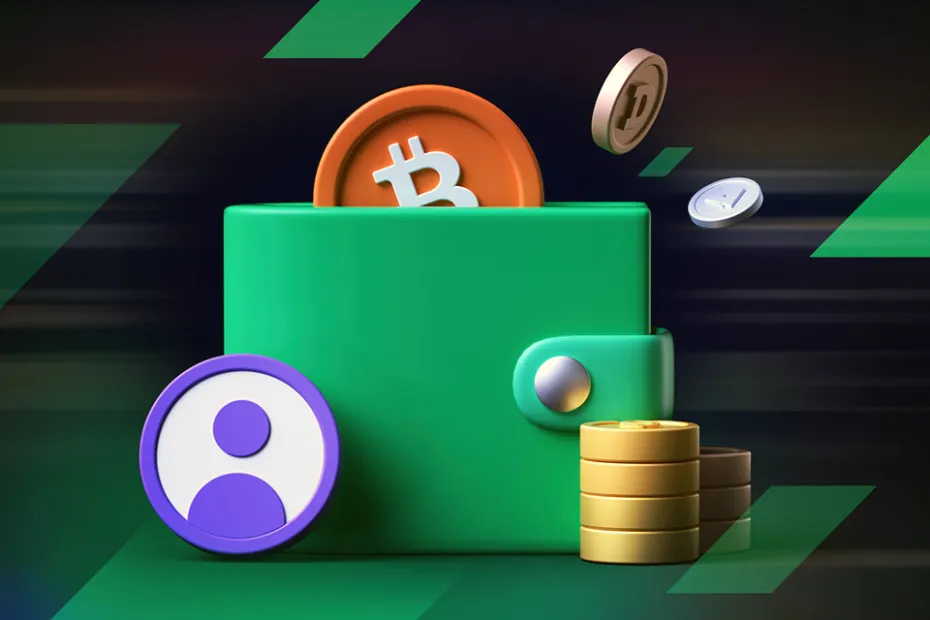Introduction
Cryptocurrencies have gained widespread adoption, with millions of people worldwide holding digital assets like Bitcoin, Ethereum, and other altcoins. These assets are stored in cryptocurrency wallets, which come in various forms, including hardware wallets, software wallets, and online wallets. While cryptocurrencies offer a revolutionary way to store and transfer value, they also come with significant security risks. Hacking attempts, phishing attacks, and the loss of private keys can lead to irreversible financial damage. Therefore, ensuring the security of cryptocurrency wallets is paramount for both individual users and businesses.
This article explores how cryptocurrency wallet security mechanisms are designed to prevent hacking, protect assets, and minimize the risk of loss. We will examine the various types of wallets, their security features, common threats, and best practices for securing digital assets.
1. Understanding Cryptocurrency Wallets
A cryptocurrency wallet is a digital tool used to store, send, and receive cryptocurrency. Unlike traditional wallets, cryptocurrency wallets do not store physical money but rather store cryptographic keys—specifically the public key and private key—which are used to access and manage cryptocurrency holdings on a blockchain.
1.1 Types of Cryptocurrency Wallets
Cryptocurrency wallets come in several forms, each offering different levels of security, accessibility, and user control.
1.1.1 Hot Wallets
- Software wallets (or hot wallets) are connected to the internet. They are user-friendly and suitable for frequent transactions.
- Examples: Mobile wallets (like Trust Wallet, MetaMask), desktop wallets (like Electrum), and web wallets (like Coinbase).
- Security Risk: Being connected to the internet makes hot wallets more vulnerable to hacking, phishing, malware, and other online attacks.
1.1.2 Cold Wallets
- Hardware wallets (or cold wallets) are offline devices used for storing cryptocurrencies. They store private keys offline, making them less vulnerable to online attacks.
- Examples: Ledger Nano S, Ledger Nano X, Trezor.
- Security Risk: Cold wallets are more secure because they are disconnected from the internet, but they can still be vulnerable to physical theft or damage if not stored securely.
1.1.3 Paper Wallets
- A paper wallet is a physical piece of paper that contains the private key and public address for accessing cryptocurrency.
- Security Risk: Although it is offline, paper wallets can be easily lost or damaged, and if someone gains access to the paper wallet, they can access the funds.
2. Key Components of Cryptocurrency Wallet Security
2.1 Private Key Encryption
The private key is the most critical piece of information in cryptocurrency wallets. It acts as the “password” for accessing and managing a user’s funds. If someone gains access to a user’s private key, they can transfer the assets to their own wallet. Ensuring the private key is kept secure is fundamental to preventing hacking and theft.
- Private Key Storage: Secure storage of private keys is essential. For example, hardware wallets store private keys in secure elements, which are tamper-resistant components designed to keep the keys safe from external threats.
- Private Key Backup: A secure backup of private keys is necessary in case a user loses access to their wallet. Many wallets use seed phrases—a sequence of words that can regenerate a private key—allowing users to recover access to their funds even if their wallet is lost or damaged.
2.1.1 Encryption:
- Encryption ensures that the private key is stored securely. For example, many software wallets will encrypt the private key with a password, so even if the device is compromised, the private key remains unreadable without the correct password.
2.2 Multi-Signature (Multi-Sig) Security
Multi-signature (Multi-Sig) wallets require more than one private key to authorize a transaction. This adds an extra layer of security, as it means that even if one private key is compromised, an attacker cannot move the funds without the additional signatures.
- How Multi-Sig Works: For example, a multi-sig wallet might require three out of five private keys to sign off on a transaction. This method is often used by businesses and institutions for added security.
- Benefits:
- Prevents Unauthorized Transactions: Even if one key is compromised, attackers cannot move assets without the additional keys.
- Reduced Risk of Insider Threats: Multi-sig can be set up so that no single individual has complete control over the wallet.
2.3 Two-Factor Authentication (2FA)
Two-factor authentication (2FA) adds an additional layer of security by requiring a second form of verification in addition to the user’s password. This could be a code sent to the user’s phone, an authentication app, or a hardware security key.
- Common 2FA Methods:
- SMS-based 2FA: A one-time password (OTP) sent to the user’s phone via text message.
- App-based 2FA: Apps like Google Authenticator or Authy generate a time-sensitive OTP that the user must input along with their password.
- Hardware-based 2FA: Devices like YubiKey or U2F tokens that provide physical authentication.
- Benefits:
- Protects Against Phishing Attacks: Even if an attacker gains access to a user’s password, they would still need the second factor (e.g., the user’s phone or authentication app) to complete the login process.
2.4 Cold Storage Solutions
For long-term storage of large amounts of cryptocurrency, cold storage is highly recommended. Cold storage wallets, such as hardware wallets or paper wallets, store the private keys offline, making them nearly impossible to access via online attacks.
- Benefits of Cold Storage:
- Offline Protection: Cold wallets are not connected to the internet, so they are less vulnerable to malware, phishing, and hacking attempts.
- Secure Backup: If a cold storage wallet is lost or damaged, users can typically recover their funds using a seed phrase.
2.5 Transaction Monitoring and Alerts
Some cryptocurrency wallets offer transaction monitoring and alerts that notify users of any unusual activity or transactions involving their funds. These alerts can provide an early warning if a hacker attempts to move assets from a compromised wallet.
- Transaction Monitoring: Wallets or exchanges that offer real-time monitoring can help users track their balances and transactions, ensuring they are aware of any unauthorized activity.
- Security Alerts: Many wallets and exchanges allow users to set up alerts for transactions, logins, and other activities, providing an added layer of vigilance.
3. Common Threats to Cryptocurrency Wallets and How to Prevent Them
3.1 Phishing Attacks
Phishing is one of the most common methods used by hackers to gain access to cryptocurrency wallets. Phishing attacks typically involve deceptive emails, websites, or messages that trick users into revealing their private keys, passwords, or 2FA codes.
- Preventing Phishing:
- Always verify the URL of the website or service you are interacting with.
- Be cautious of unsolicited emails or messages asking for personal information or private keys.
- Use browser extensions that warn you if you visit a suspicious website.
- Enable 2FA to add an extra layer of protection.
3.2 Malware and Ransomware
Malware can infect a computer or mobile device and record keystrokes, steal private keys, or inject malicious code that sends funds to the attacker’s wallet. Ransomware may lock the user’s device or wallet until a ransom is paid in cryptocurrency.
- Preventing Malware and Ransomware:
- Use anti-virus software and ensure your device is regularly updated.
- Be cautious when downloading files or clicking on suspicious links.
- Avoid using your wallet on public or unsecured networks.
3.3 Loss of Private Keys or Seed Phrases
If a user loses their private key or seed phrase, they will lose access to their cryptocurrency, as there is no way to recover lost private keys on the blockchain. This is one of the most significant risks of cryptocurrency wallet security.
- Preventing Loss:
- Backup Seed Phrases: Always store your seed phrase in a secure, offline location, such as a safety deposit box or encrypted storage.
- Use Multiple Backups: Consider keeping multiple copies of your seed phrase in separate locations to reduce the risk of loss.
3.4 Social Engineering Attacks
Hackers may try to trick users into revealing their private keys or 2FA credentials by pretending to be a legitimate entity (e.g., a bank or exchange representative).
- Preventing Social Engineering:
- Always verify the identity of anyone who requests sensitive information.
- Do not share your private key, 2FA codes, or password with anyone.

4. Best Practices for Securing Cryptocurrency Wallets
4.1 Use Multi-Sig Wallets for Added Security
For businesses or individuals holding significant amounts of cryptocurrency, multi-signature wallets provide an added layer of protection by requiring multiple signatures to authorize transactions.
4.2 Keep Private Keys Offline
For long-term storage, use cold wallets such as hardware wallets or paper wallets to keep private keys offline and away from online threats.
4.3 Regularly Update and Patch Wallet Software
Make sure your cryptocurrency wallet software is always up to date with the latest security patches. This applies to both software wallets and mobile applications.
4.4 Educate Yourself About Security Risks
Stay informed about the latest threats in the cryptocurrency space and how to protect yourself from phishing, malware, and other attacks.
Conclusion
The security of cryptocurrency wallets is paramount to protecting digital assets from theft, loss, and unauthorized access. By utilizing best practices such as strong encryption, multi-signature wallets, cold storage, and two-factor authentication, users can significantly reduce the risk of hacking and asset loss. As cryptocurrency adoption continues to grow, the need for robust security measures will only increase, making it essential for both individual users and businesses to adopt advanced security techniques to safeguard their assets. By staying vigilant and adopting a proactive security mindset, users can confidently navigate the world of cryptocurrencies while minimizing their exposure to risks.
















































